Homona coffearia (tea tortrix)
Identity
- Preferred Scientific Name
- Homona coffearia (Nietner, 1861)
- Preferred Common Name
- tea tortrix
- Other Scientific Names
- Capua coffearia (Nietner, 1861)
- Godana simulana Walker, 1866
- Homona fasciculana Walker, 1863
- Homona fimbriana Walker, 1869
- Homona menciana (Walker, 1863)
- Homona socialis Meyrick, 1912
- Tortrix coffearia (Nietner, 1861)
- International Common Names
- Englishcoffee tortrixtea flushwormtea tortricid
- Frenchtordeuse du theier
- Local Common Names
- Germanytee-wickler
- Japantya-hamaki
- Netherlandszwartkoprups an tee
- EPPO code
- HOMOCO (Homona coffearia)
- EPPO code
- HOMOME (Homona menciana)
Pictures

Adult
Wingspan, females 12-13 mm, males 8-10 mm, forewings with one or two pale bands running obliquely across them, in males the darker areas have a more intricate pattern.
©Natural History Museum, London
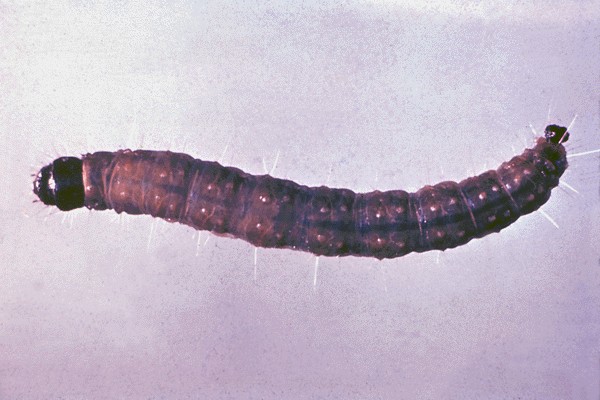
Larva
Larvae have a shiny black head and grow up to about 25 mm in length.
©James Litsinger
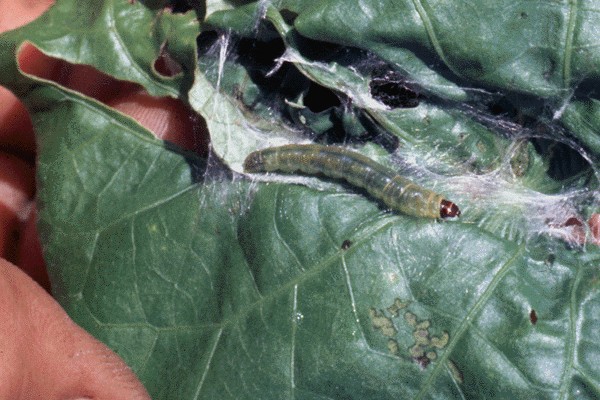
Larva and damage
Larval damage, including webbing, on mung bean.
©James Litsinger
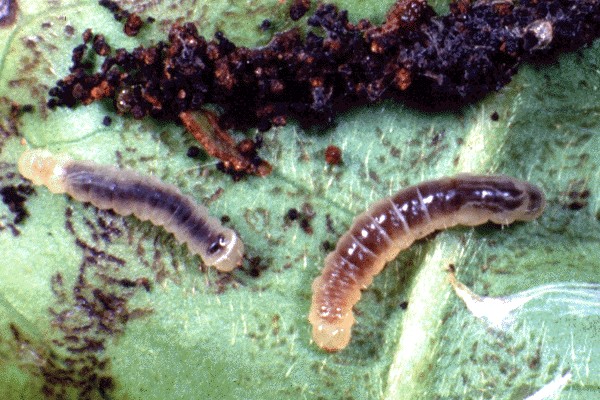
Homona coffearia on tea
Homona coffearia on tea.
©CTC/Zeneca
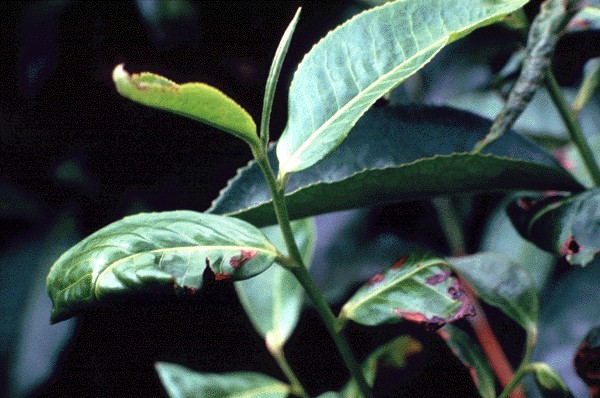
Damage symptoms on tea plant
Damage by Homona coffearia on tea plant.
©CTC/Zeneca
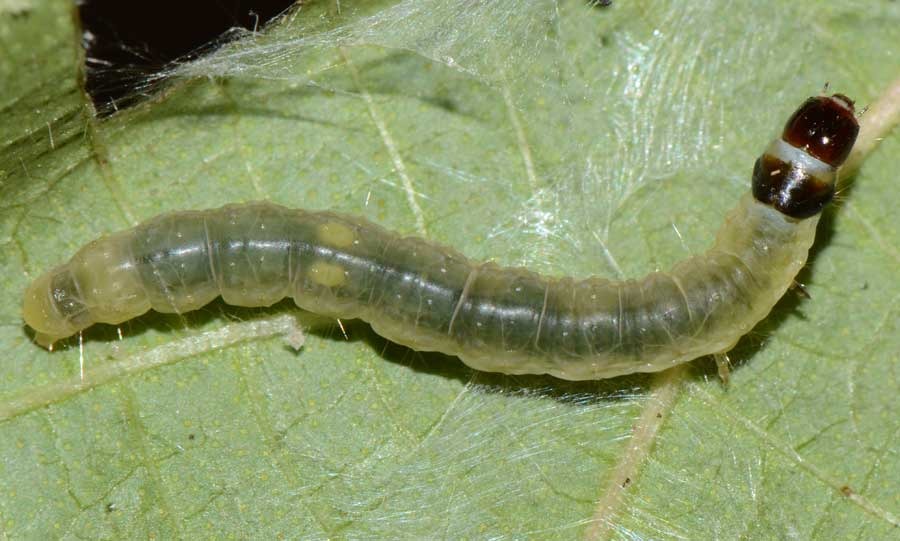
Homona coffearia
Larva
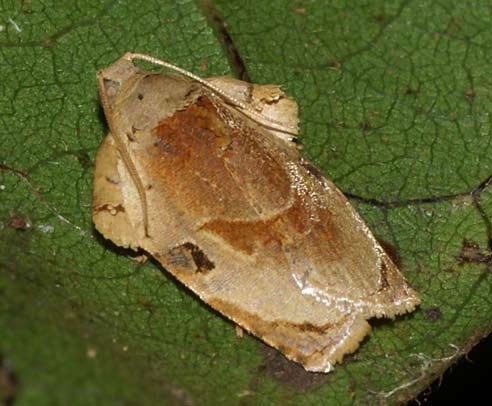
Homona coffearia
Adult moth
NBAIR
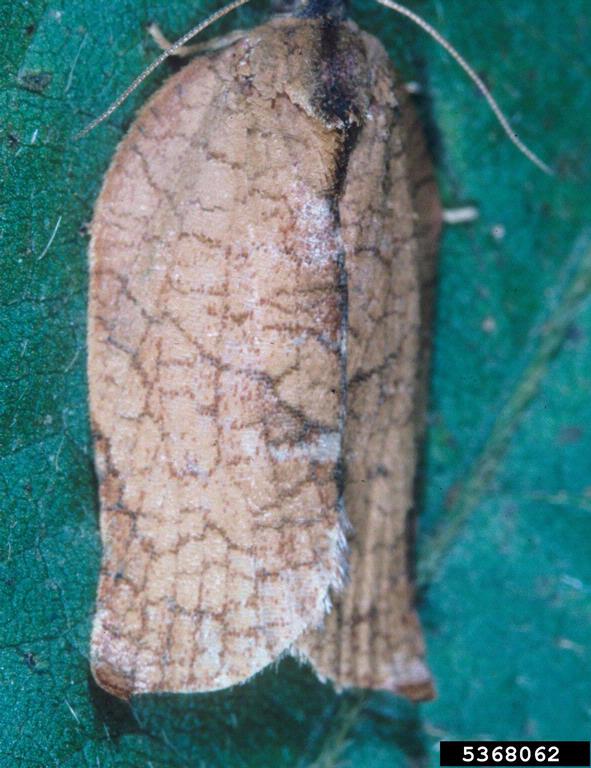
Homona coffearia
Merle Shepard, Gerald R.Carner, and P.A.C Ooi, Clemson University, bugwood.org
Refer to Bugwood: http://www.bugwood.org/ImageUsage.html
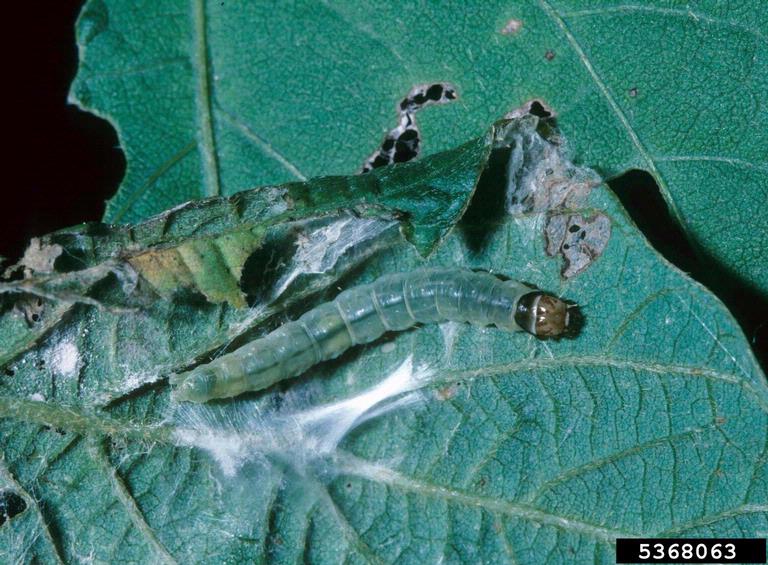
Homona coffearia
Merle Shepard, Gerald R.Carner, and P.A.C Ooi, Clemson University, bugwood.org
Refer to Bugwood: http://www.bugwood.org/ImageUsage.html
Distribution
Host Plants and Other Plants Affected
Symptoms
Larvae of H. coffearia feed on leaves, especially at the growing points of plants. Leaves are webbed together in larval nests which eventually become blackened masses of leaf fragments, silken threads and caterpillar frass. The larvae do not eat the whole leaf, but nibble at random. The leaf nest has several holes and appears blackened and untidy. Areas affected by H. coffearia have a bronzed appearance when viewed from a distance.
List of Symptoms/Signs
| Symptom or sign | Life stages | Sign or diagnosis |
|---|---|---|
| Plants/Leaves/webbing |
Prevention and Control
Biological Control
The parasite Macrocentrus homonae was introduced to Sri Lanka from Java in 1935-36 and has reduced H. coffearia to an occasional and local pest there (Cranham and Danthanarayana, 1971). H. coffearia is the only known host of M. homonae (Mills and Carl, 1991), which has also been used successfully to control the tea tortrix in India (Chacko, 1987; Selvasundaram and Muraleedharan, 1987). A series of trials were conducted on the egg parasitoid Trichogramma erosicornis to control H. coffearia in Sri Lanka, but the results of this were not encouraging (Tamaki, 1991).
The pest is well controlled in the highlands of New Guinea by two ichneumonid parasitoids, Theronia simillima and Camptotypus (Hemipimpla) clotho.
Chemical Control
Aminocarb, fenitrothion and formothion have been found to be effective in controlling H. coffearia (Tamaki, 1991). Unfortunately, chemical control against the tea pest Xyleborus fornicatus has actually caused outbreaks of H. coffearia in Sri Lanka by destroying its natural enemies (Cranham and Danthanarayana, 1971).
The parasite Macrocentrus homonae was introduced to Sri Lanka from Java in 1935-36 and has reduced H. coffearia to an occasional and local pest there (Cranham and Danthanarayana, 1971). H. coffearia is the only known host of M. homonae (Mills and Carl, 1991), which has also been used successfully to control the tea tortrix in India (Chacko, 1987; Selvasundaram and Muraleedharan, 1987). A series of trials were conducted on the egg parasitoid Trichogramma erosicornis to control H. coffearia in Sri Lanka, but the results of this were not encouraging (Tamaki, 1991).
The pest is well controlled in the highlands of New Guinea by two ichneumonid parasitoids, Theronia simillima and Camptotypus (Hemipimpla) clotho.
Chemical Control
Aminocarb, fenitrothion and formothion have been found to be effective in controlling H. coffearia (Tamaki, 1991). Unfortunately, chemical control against the tea pest Xyleborus fornicatus has actually caused outbreaks of H. coffearia in Sri Lanka by destroying its natural enemies (Cranham and Danthanarayana, 1971).
Impact
H. coffearia was a major pest of tea from 1910 to the 1930s in Sri Lanka, but the introduction of the parasitoid Macrocentrus homonae from Indonesia was very successful and reduced H. coffearia to the status of a minor seasonal pest. However, the importance of this pest has increased since the mid-1950s because insecticides used to control the shot-hole borer Xyleborus fornicatus have destroyed the natural enemies of H. coffearia.
Information & Authors
Information
Published In
Copyright
Copyright © CABI. CABI is a registered EU trademark. This article is published under a Attribution-NonCommercial-NoDerivatives 4.0 International (CC BY-NC-ND 4.0)
History
Published online: 16 November 2021
Language
English
Authors
Metrics & Citations
Metrics
SCITE_
Citations
Export citation
Select the format you want to export the citations of this publication.
EXPORT CITATIONSExport Citation
View Options
View options
Get Access
Login Options
Check if you access through your login credentials or your institution to get full access on this article.


